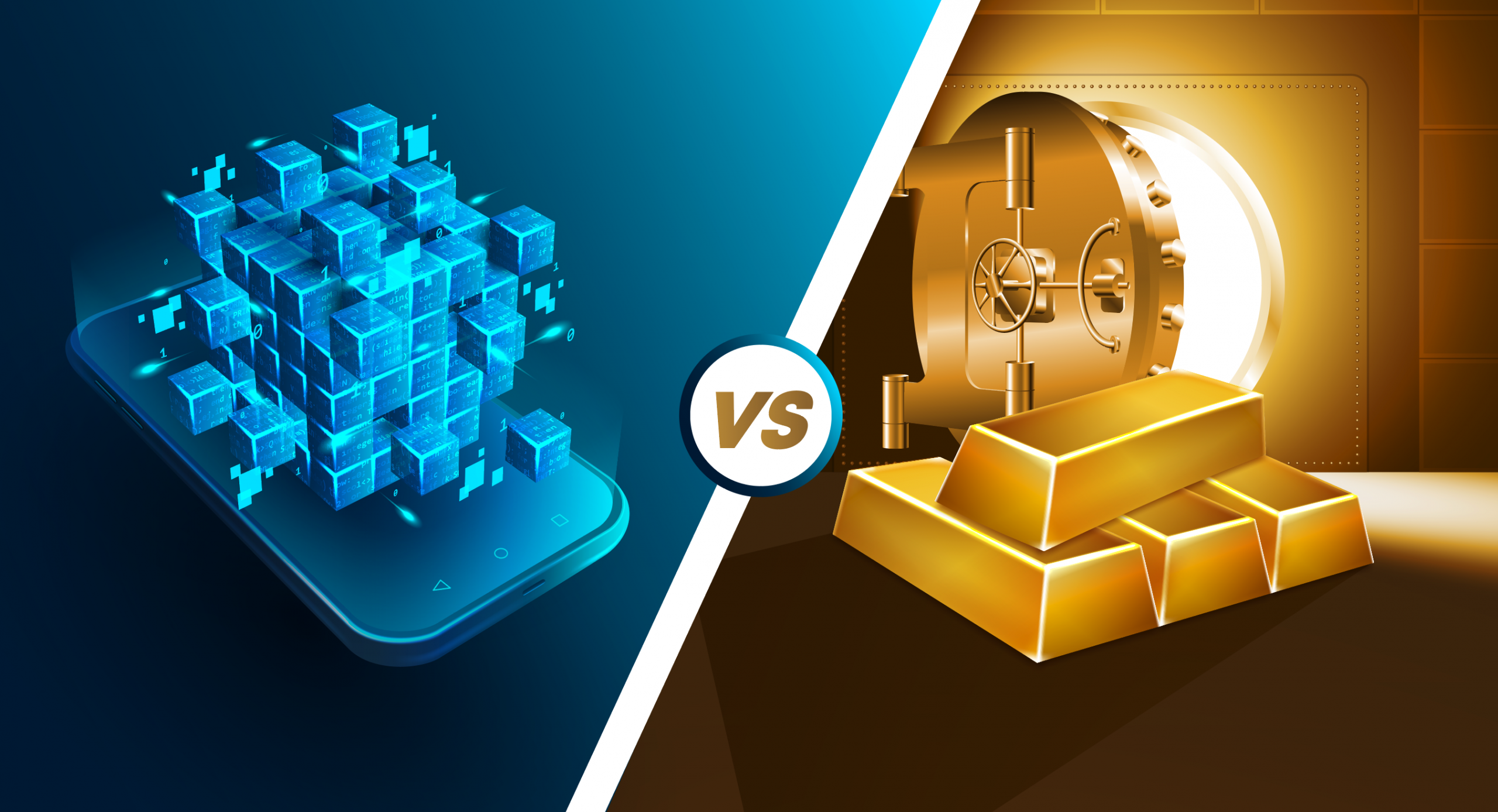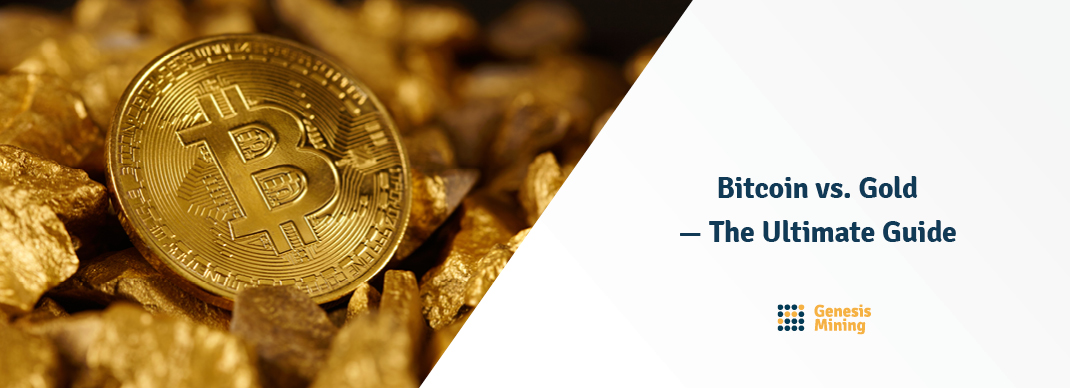[ad_1]
Some have called Bitcoin and other cryptocurrencies the modern equivalent of gold. In some ways this statement rings true, yet there are distinct and notable differences between Bitcoin and gold that warrant discussion.
The relationship between Bitcoin and gold is one that we believe the general public is not intimately familiar with. In our recently-issued survey titled How Well Do Americans Understand Money?, a substantial portion of respondents did not realize that gold is no longer the commodity-backing for the U.S. dollar. So it doesn’t seem like a stretch to assume the average American is less than familiar with the comparative relationship between gold and Bitcoin. Why would they be?
As a company on the front lines of Bitcoin extraction, we at Genesis Mining fancy ourselves crypto enthusiasts, and that may even be stating things a bit lightly. It’s our job to understand not just the role of cryptocurrency in today’s economic climate, but also what it could be in the future.
To understand Bitcoin’s unrealized potential, we can start with the similarities and differences between Bitcoin and gold, a resource that was once a fundamental element of the global economy.
One of the more obvious similarities between gold and Bitcoin is that they are both fixed in their total amount, though not in precisely the same manner. While the amount of gold in circulation grows each time more is mined, it does not grow in any way that materially impacts the price of the asset, as other factors pertaining to gold (a crash in the stock market, for example) could.
Bitcoin is an even stronger example of scarcity than gold. When Bitcoin was created in 2009, a limit on the number of Bitcoins that may ever been mined was set at 21 million. This hard cap established a definable scarcity that ensures that supply-driven hyperinflation never drives Bitcoin’s value near zero.
Paper money, a form of fiat currency, stands as a counterexample to these scarce resources. The U.S. dollar and many other national currencies were once made scarce by their status as a commodity currency. That is, they were backed by a finite resource, typically gold. Commodity backing meant that a government had to be able to redeem all of the paper money in circulation for its equivalent in gold at any given moment. This necessity limited the amount of paper money that could be printed.
However, the abandonment of the gold standard has essentially annihilated the scarcity of paper currency. This has led to hyperinflation, artificial conceptions of wealth and value, and the continued diminishment of the dollar’s purchasing power.
Hence why cryptocurrency advocates see Bitcoin as the scarce, intrinsically valuable alternative to fiat currency.

One gripe with Bitcoin, especially by those who have not truly attempted to use Bitcoin as a means of exchange, is that it is simply not as real-world-ready as the U.S. dollar in its many forms. For example, your local gas station is probably not ready to accept your Bitcoin in exchange for petrol. And while these statements may be largely true as of now, it is not crazy to envision a day when most card readers and online merchants accept Bitcoin debit cards. It is not a pipe dream to think that Bitcoin could be as readily-usable as a means of exchange as the U.S. dollar.
You could not make the same claim about gold, which is far less liquid than the highly-digitized mechanisms that power cryptocurrency. If gold were to replace the U.S. dollar, it would have done so long ago. One of the reasons why gold was the commodity backing for national currency, and not the currency itself, is that gold is simply not a practical tool for purchasing and selling goods and services.
Gold bars are heavy. They can’t be easily broken down (as you could make change for a dollar) or transferred through digital means (as you could exchange funds via debit card, or a Bitcoin wallet). The price of gold is always fluctuating, so even open-minded merchants are hesitant to accept gold as payment unless they receive an amount far above the value of good or service they are selling.
Contrarily, Bitcoin is digital. Just as you can access your U.S. dollars through digital means (debit card, wire transfer, etc.), owners of Bitcoin send digital funds on a daily basis through similar modes. Merchants that have the available infrastructure can accept payment via a Bitcoin debit card just as they can a debit card from Bank of America or Chase.
This real-world, day-to-day utility — even though it has not quite been realized at scale because of minor-yet-real barriers to adoption — is what separates Bitcoin’s potential from the limitations inherent to gold. This difference is critical, and it is why Bitcoin advocates believe that it can one day become a widely-used currency, rather than just the anchor for paper currency, as gold once was.
Gold and Bitcoin both fluctuate in value. They are both intrinsically valuable, gold because of its physical properties, Bitcoin because of the nodes/users backing it). They can both be traded for paper currency, and their scarcity gives each a measure of intrinsic value that fiat currency — U.S. dollars, Euros, and virtually every other national currency used today — does not have. In these ways, Bitcoin and gold are similar.
But gold is largely a store of value, not a practical means of exchange. Bitcoin does not have intrinsically limiting properties such as weight and indivisibility — limitations that gold does have — stunting its potential to become a widely-used means of exchange.
The fundamentals are there for Bitcoin to become the means of exchange its advocates know it can be.
Dear world, the ball is in your court now.
[ad_2]
Source link



